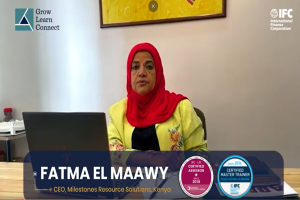What Do Skirts and Training Have in Common?
Women’s fashion in the 1800s was characterized by maxi dresses which came all the way to the ankles. By the 1940’s, skirt lengths crept to mid-calf with the introduction of the midi-skirt. The 1960s continued the upward climb with mini-skirts that sat mid-thigh. These days, any length is acceptable, including the hybrid hi-lo: short in the front and long in the back. Different lengths are acceptable for different circumstances. The same thing can be said of the training.
Through the 1980s, training usually involved face-to-face, single or multi-day courses. These courses, which now are considered macro-learning, provide the context and the details while giving learners a chance to practice and get feedback. But they lose points for efficiency. Aside from the associated logistical costs, much of the information is not used immediately.
In the 1990s, shorter, self-paced, computer-based courses proliferated. Now considered mini-learning and mostly migrated to the internet, web-based training generally lasts no more than an hour. These courses work well for introducing a subject. But they suffer from middle-position problems: some consider them too superficial to explain a subject and others consider them too long and boring.
Enter micro-learning in the 2010s. Micro-learning focuses on giving learners what they need when they need it but nothing more. On the positive side, viewers get answers to questions in under five minutes. On the negative side, micro-learning provides little context so users do not learn how to problem-solve the next issue that may arise.
Like women’s fashion, today’s organizations do not have to choose a single category of learning to offer employees. They can choose what is best for particular circumstances. The following table highlights the differences:

Which one is best for your organization? It depends on what you are trying to achieve. The following questions can help you decide:
- At what point on their learning journey are the learners?
- For new, basic information, consider micro or mini-learning.
- For new, complex information, consider macro-learning.
- For information that supplements existing knowledge, consider micro-learning.
- Do learners want answers to immediate tasks or an understanding of the bigger picture?
- For tasks, consider micro-learning.
- For the bigger picture, consider mini or macro-learning.
- How critical is practice and feedback to learning the behavior?
- For critical, use macro-learning.
- For less critical, consider mini- or micro-learning.
Photo by Amelia Bartlett on Unsplash





